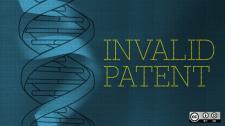Intellectual property and assisted reproductive technology
By David Cyranoski, Jorge L. Contreras & Victoria T. Carrington,
Nature Biotechnology
| 01. 18. 2023
Stanford bioethicist Henry Greely predicts that a large proportion of human pregnancies — perhaps even 90% in the United States — will one day result from in vitro gametogenesis (IVG), the production of eggs and sperm from undifferentiated human cells1. Whether or not this prediction proves accurate, it is likely that IVG will fundamentally change how humans reproduce. IVG could offer the possibility of reproduction to those experiencing infertility, allow parents to choose from hundreds of genetically characterized embryos, enable relatively safe germline genetic modification, and open the door for same-sex parents to have genetically related offspring. Some assisted reproduction experts, like Jacques Cohen of the ART Institute of Washington, predict that IVG will replace virtually all conventional in vitro fertilization (IVF) procedures for those experiencing problems with fertility (J. Cohen, personal communication). Greely suspects that eventually most prospective parents — even those without fertility problems — will opt for IVG to reduce the risk of bearing offspring with genetic defects or to select for desirable traits.
It is not surprising, then, that researchers who are putting together...
Related Articles
By Grace Won, KQED [with CGS' Katie Hasson] | 12.02.2025
In the U.S., it’s illegal to edit genes in human embryos with the intention of creating a genetically engineered baby. But according to the Wall Street Journal, Bay Area startups are focused on just that. It wouldn’t be the first...
Several recent Biopolitical Times posts (1, 2, 3, 4) have called attention to the alarmingly rapid commercialization of “designer baby” technologies: polygenic embryo screening (especially its use to purportedly screen for traits like intelligence), in vitro gametogenesis (lab-made eggs and sperm), and heritable genome editing (also termed embryo editing or reproductive gene editing). Those three, together with artificial wombs, have been dubbed the “Gattaca stack” by Brian Armstrong, CEO of the cryptocurrency company...
By Lucy Tu, The Guardian | 11.05.2025
Beth Schafer lay in a hospital bed, bracing for the birth of her son. The first contractions rippled through her body before she felt remotely ready. She knew, with a mother’s pit-of-the-stomach intuition, that her baby was not ready either...
By Emily Glazer, Katherine Long, Amy Dockser Marcus, The Wall Street Journal | 11.08.2025
For months, a small company in San Francisco has been pursuing a secretive project: the birth of a genetically engineered baby.
Backed by OpenAI chief executive Sam Altman and his husband, along with Coinbase co-founder and CEO Brian Armstrong, the startup—called...




